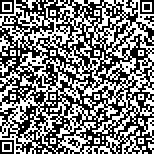|
| 引用本文: | 左涛,王荣,高尚武,王克.南黄海鳀鱼(Engraulis japonicus)产卵场小型桡足类的数量分布.海洋与湖沼,2006,37(4):330-336. |
| |
|
| |
|
|
| 本文已被:浏览 1868次 下载 0次 |

码上扫一扫! |
|
|
| 南黄海鳀鱼(Engraulis japonicus)产卵场小型桡足类的数量分布 |
|
左涛1,2, 王荣2, 高尚武2, 王克2
|
|
1.中国水产科学院黄海水产研究所 青岛266071;2.中国科学院海洋研究所海洋生态与环境科学重点实验室 青岛266071
|
|
| 摘要: |
| 2000—2002年6月在黄海西南侧、山东半岛南部鳀鱼产卵场专项调查中,由底至表垂直拖网获得浮游生物中网(网孔径160μm)浮游动物样品,作者就该产卵场内四种主要小型桡足类(体长<1mm)双刺纺锤水蚤、小拟哲水蚤、拟长腹剑水蚤和近缘大眼剑水蚤的数量分布进行分析。在连续三年的6月,测区内均以小拟哲水蚤和拟长腹剑水蚤数量最多。四种小型桡足类的数量空间分布虽有一定的种间、年间差异,但总体上来说,四种小型桡足类的密集中心大多分布于山东半岛沿岸或近苏北浅滩沿岸水域。相关性分析表明,双刺纺锤水蚤和近缘大眼剑水蚤与底层水温呈正相关,与盐度呈负相关,拟长腹剑水蚤与底层水温呈负相关,与盐度呈正相关。小拟哲水蚤与温度的相关性较大。双刺纺锤水蚤和小拟哲水蚤与鳀鱼仔、稚鱼的数量分布有着较为显著的正相关。 |
| 关键词: 小型桡足类 丰度 黄海 鳀鱼产卵场 |
| DOI: |
| 分类号: |
| 基金项目:国家重点基础研究发展项目(973)资助,G1999043707号;国家自然科学基金资助项目,30371104号;中国水产科学研究院黄海水产研究所博士后基金资助,2004—2006。 |
| 附件 |
|
| ABUNDANCE OF SMALL-SIZED COPEPODS IN ANCHOVY ENGRAULIS JAPONICUS SPAWNING GROUND IN SOUTHERN YELLOW SEA |
|
ZUO Tao1,2, WANG Rong2, GAO Shang-Wu2, WANG Ke2
|
|
1.Yellow Sea Fisheries Research Institute, Chinese Academy of Fishery Sciences, Qingdao, 266071;2.Key Laboratory of Marine Ecology & Environmental Sciences, Institute of Oceanology, Chinese Academy of Sciences, Qingdao, 266071
|
| Abstract: |
| This paper reports the abundance of four important small-sized copepods (body length< 1mm) .i e. Acartia bifilosa, Paracalanus parvus, Oithona similis, Corycaeus affinis which are major preys of fish larvae in anchovy (Engraulis japonicus) spawning ground in southern Yellow Sea. Copepods samples were collected in 14 stations of this area during June of the year of 2000, 2001, 2002 by R/V “Beidou”. They were towed vertically from bottom to surface with meso-plankton conical net (mesh size 160 μm, net mouth area 0.2 m2), and then preserved in 5% neutral formalin seawater solution. Filtered water mass of each tow was measured by TSK flow meter in center of the net mouth. In laboratory, copepods samples were split equally into several sub-samples in which species was sorted and identified under microscope. Abundance was expressed as individuals per square meter (ind /m2) and calculated by the equation of (raw counts × sub-sample fraction) / (filtered water volume × sampling depth). At each station prior to copepods sampling, temperature and salinity as function of depth were measured by SEAB IRD-19 CTD instrument.
From the results, of four copepods, P. parvus and O. similis were the most abundant and accounted for more than 95% of the total in the area. A. bifilosa and C. affinis were relatively less in number. The abundances of four copepods varied greatly in the same month of three continuous years. Total abundance was peaked in 2002 (352 × 103 ind/m2), and only 185 × 103 ind/m2 in 2000 and 180 × 103 ind/m2 in 2001. O. similis and P. parvus were the main contributors to total annual variations in abundance. Annual differences of O. similis and C. affinis were significant statistically by variance analysis. Moreover, four dominant species had some differences in spatial distributions in the three years. A. bifilosa concentrated mainly in neritic area. Its high abundance located at the stations near Shandong Peninsula in 2000 and 2002, and near Haizhou Bay in 2001. P. parvus distributed mostly in offshore stations in 2000 and 2001, and inshore stations along Shandong Peninsula in 2002. C. affinis was a typical neritic species, it was limited in the coastal waters along Shandong Peninsula and north Jiangsu in all cruises. O. similis densified in the southwestern part of the study area in 2000, in the northeastern part of the study area near Chengshan Cape in 2001 and near Haizhou Bay in 2002. In overall, although the distributions of four copepods abundance differed in the three years, they concentrated along the coastal waters from Shandong Peninsula to Haizhou Bay where anchovy eggs often occur in June. By spearman correlation analysis, the abundances of A. bifilosa and C. affinis were correlated positively with bottom temperature and negatively with salinity, and vise versa for the abundance of O. similis. Additionally, A. bifilosa and P. parvus showed also significant positive correlation to the anchovy larvae. |
| Key words: Small-sized copepod, Abundance, Yellow Sea, Anchovy spawn ground |
|
|
|
|
|
